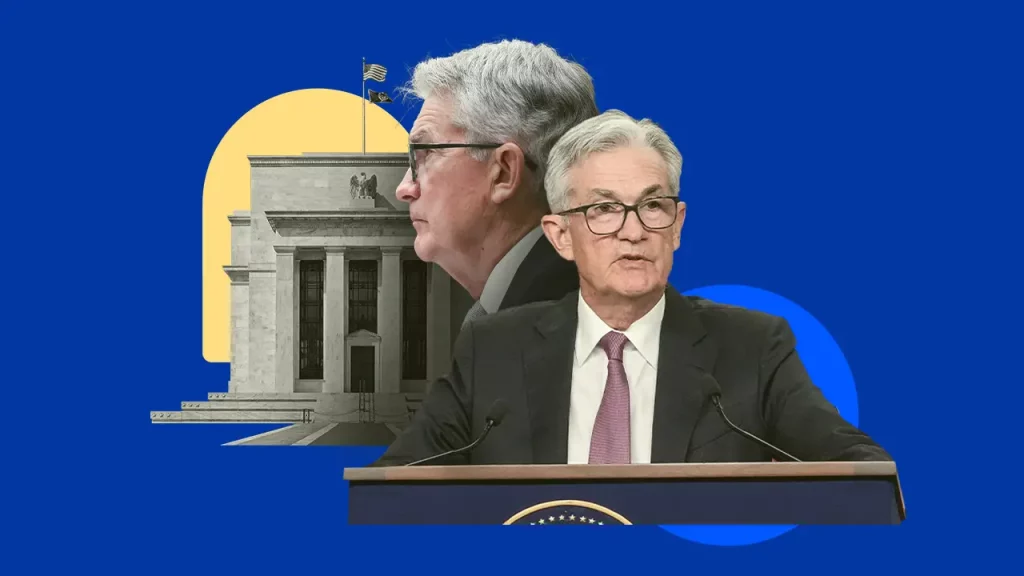Inflation is a critical economic indicator with far-reaching implications for both domestic and international markets. In recent years, the U.S. has experienced heightened inflationary pressures, which has had significant effects on global markets. For European investors, understanding the implications of U.S. inflation trends is essential to making informed decisions in an increasingly interconnected world economy. This article will explore the potential effects of U.S. inflation on European investment markets, examine the impact of the divergence between the U.S. Federal Reserve (Fed) and the European Central Bank (ECB) policies, and provide strategies for European investors to navigate the complexities of a global inflationary environment.
Understanding U.S. Inflation and Its Global Ripple Effects
Inflation in the U.S. has been a dominant economic concern since the post-pandemic recovery, reaching levels not seen in decades. The U.S. Consumer Price Index (CPI), a key measure of inflation, surged above the Federal Reserve’s target of 2%, causing considerable concern among investors globally. While the causes of inflation are multifaceted, the primary drivers in the U.S. have included supply chain disruptions, labor shortages, and expansive fiscal policies enacted by the government to address the economic fallout from COVID-19.
For European investors, U.S. inflation has both direct and indirect effects. A rise in U.S. inflation often leads to tighter monetary policies as the Federal Reserve raises interest rates to combat inflation. These rate hikes can impact global investment flows, particularly in emerging markets and Europe, as capital may shift towards higher-yielding U.S. assets. Additionally, the strength of the U.S. dollar, which typically rises in times of higher inflation due to interest rate hikes, can affect the competitiveness of European exports and the valuations of European assets.
The most immediate consequence for European investors is the potential for volatility in currency markets. A stronger U.S. dollar can result in depreciation of the euro, making European goods and services more competitive in the U.S. market but increasing the cost of imports from the U.S. for European consumers and businesses. This currency dynamic plays a crucial role in the investment decision-making process for those invested in transatlantic trade and global equities.
The Divergence Between U.S. Federal Reserve and European Central Bank Policies
A key factor shaping the relationship between U.S. inflation and European investment markets is the divergence between the monetary policies of the U.S. Federal Reserve and the European Central Bank. The Federal Reserve, in response to rising inflation, has embarked on a tightening monetary policy, including increasing interest rates and reducing the size of its balance sheet. This shift towards a more hawkish stance aims to curb inflationary pressures and stabilize the U.S. economy.
In contrast, the European Central Bank has been more cautious in its approach. The ECB has struggled with persistently low inflation levels for years and, as a result, has been hesitant to implement significant rate hikes. While the ECB has acknowledged the global inflationary trends and the pressures from rising energy prices, it has moved more slowly than its U.S. counterpart in terms of tightening policies. This divergence in monetary policy creates an interesting dynamic for investors.
For European investors, this divergence presents both risks and opportunities. On one hand, the ECB’s more dovish stance can support economic growth in the eurozone by keeping borrowing costs low, which can be beneficial for European equities, particularly in sectors sensitive to interest rates such as real estate and consumer staples. On the other hand, the gap between U.S. and European interest rates could create a capital outflow from Europe as investors seek higher returns in the U.S. markets, potentially putting downward pressure on the euro.
The differing monetary policies also impact the relative attractiveness of European and U.S. bonds. With U.S. yields rising due to the Fed’s tightening, U.S. bonds become more attractive relative to European bonds, which may remain at lower yields if the ECB continues to keep rates low. This disparity can influence the cross-border flow of capital, with investors potentially reallocating their portfolios in favor of U.S. assets, which can have ripple effects across global markets.
The Impact on European Investment Markets
The potential effects of U.S. inflation on European investment markets are multifaceted. One of the most significant consequences is the shift in global investment flows. Higher U.S. interest rates, driven by efforts to tame inflation, typically make U.S. assets, including government bonds and equities, more attractive to global investors. As capital flows into the U.S., there may be a reduction in demand for European assets, particularly those linked to emerging markets or high-risk, high-return sectors. This shift could lead to underperformance in European equity markets relative to U.S. markets.
On the other hand, certain sectors in Europe may benefit from a global inflationary environment. For instance, companies in the energy sector may see higher earnings due to rising commodity prices, and exporters may gain from the weaker euro resulting from the stronger U.S. dollar. Additionally, inflationary pressures can benefit companies with pricing power—those able to pass on higher costs to consumers without significantly hurting demand.
Investors looking to diversify their portfolios in response to U.S. inflation should also consider European real estate and infrastructure, which tend to be more resilient in periods of rising inflation. These sectors often provide stable, long-term returns and can act as a hedge against inflation, offering European investors an opportunity to protect their portfolios from potential U.S. monetary policy shifts.

How Investors Can Make Informed Decisions in a Global Inflationary Environment
In a global inflationary environment, making informed investment decisions requires a nuanced understanding of macroeconomic trends and their potential impact on local markets. For European investors, there are several strategies to consider as they navigate the complex landscape shaped by U.S. inflation.
1. Currency Hedging:
Given the potential for U.S. dollar appreciation due to inflationary pressures and Fed rate hikes, currency risk becomes a key consideration for European investors. One strategy to mitigate this risk is currency hedging, which involves using financial instruments such as forward contracts or options to offset potential losses from unfavorable currency movements. Hedging allows investors to protect the value of their European-based portfolios from adverse currency fluctuations, particularly when investing in U.S. assets.
2. Diversification Across Asset Classes:
Investors should continue to diversify their portfolios across a range of asset classes, including stocks, bonds, real estate, and commodities. While U.S. equities may be attractive in a high-inflation environment, it is also important to consider investments in European markets, particularly those in inflation-hedging sectors such as utilities, energy, and consumer staples. The diversification of assets across different geographical regions and sectors can help reduce risk and smooth out potential volatility.
3. Focus on Inflation-Resistant Sectors:
Certain sectors are better positioned to weather inflationary pressures than others. For example, inflation-resistant sectors such as energy, materials, and consumer staples tend to perform well during periods of rising prices. Additionally, companies with strong pricing power, such as those in the technology and healthcare sectors, may be able to pass on increased costs to consumers, thus maintaining profitability.
4. Keep an Eye on Central Bank Policy:
Investors should closely monitor the policies of both the U.S. Federal Reserve and the European Central Bank. Any changes in interest rates or monetary policy can have profound effects on investment markets. By staying informed about central bank actions, investors can better anticipate potential shifts in market dynamics and adjust their portfolios accordingly.
5. Consider Long-Term Strategies:
In times of inflation, it is important for investors to focus on long-term growth rather than short-term market fluctuations. Inflation can create volatility in the markets, but long-term investments in strong, fundamentally sound companies or sectors can provide a hedge against the erosion of purchasing power.
Conclusion
U.S. inflation trends have significant implications for European investors. The divergence in monetary policies between the U.S. Federal Reserve and the European Central Bank, coupled with the global impact of rising inflation, creates both risks and opportunities in European investment markets. By understanding the effects of U.S. inflation on currency markets, cross-border investment flows, and sector performance, investors can make more informed decisions. Additionally, strategies such as currency hedging, diversification, and focusing on inflation-resistant sectors can help European investors navigate this complex and ever-changing global economic environment.






























